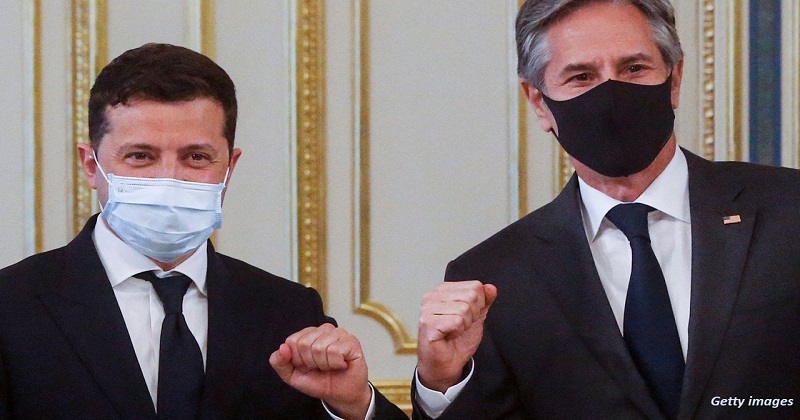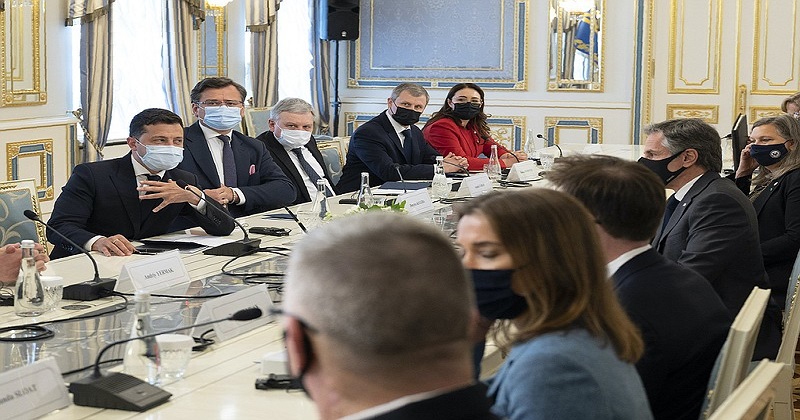Kyiv: U.S. secretaries arrived in Ukraine after Russian set back from Kiev. Secretary of State Antony Blinken and Secretary of Defense Lloyd Austin were in Kyiv late on Sunday night for talks with Ukrainian President Volodymyr Zelensky, the highest-level U.S. visit to the war-torn country since Russia invaded.
A Zelensky adviser, Oleksiy Arestovych, told that the two Americans were talking with Zelensky “right now” in the Ukrainian capital. Arestovych said the talks would center on weapons supply and joint policies toward Russia.
The U.S. Department of Defense declined to comment after the adviser spoke on Sunday. The Department of State didn’t immediately return a request for comment.

The visit comes with the war entering a new phase as Russia shifts its forces to the east and south after failing to take Kyiv or topple
Zelensky’s government in the early weeks of the conflict. Ukraine has pressured the U.S. and its allies to send more powerful weapons to repel Russia from the eastern Donbas region, where Russian troops are seeking to gain full control of the besieged port of Mariupol.
Zelensky ahead of the visit praised accelerated weapons shipments that he said could help Ukraine step up its counteroffensive, but added the U.S. envoys “should not come here with empty hands.”
U.K. Prime Minister Boris Johnson, European Commission President Ursula von der Leyen and other foreign leaders have previously visited Kyiv to show support for the Ukrainian government.
Those trips raised pressure on the U.S. to schedule a visit by President Joe Biden or other senior officials. The White House said earlier there were no plans for Biden to visit the war-torn country. Zelensky’s last in-person meeting with a senior U.S. official came on Feb. 19, before Russia’s invasion, with Vice President Kamala Harris in Munich.

With Russian President Vladimir Putin showing no signs of backing down as the conflict enters its third month, the U.S. and European allies have continued to ratchet up sanctions on Moscow and accelerate the delivery of weapons to Ukraine.
At the same time, peace talks between Russia and Ukraine have ground to a halt and the humanitarian situation has grown more dire. The UN’s refugee agency last week said more than 5 million people have fled Ukraine. In Mariupol, which Putin said was effectively under Russian control, Ukrainian officials said about 100,000 people remain, and they accused Russian forces of trying to conceal civilian deaths.
Images of apparent atrocities against civilians in areas around Kyiv prompted Biden to label Putin a “butcher” and a “war criminal” who is guilty of “genocide” against the Ukrainian people. Russia has denied the allegations.
Biden last week pledged an additional $1.3 billion in weaponry and economic aid, adding to an $800 million package that included heavy artillery for the first time, as well as additional helicopters. The latest aid shipments will include dozens of howitzers and attack drones.
The U.S. president said, however, he would send a formal request to Congress for more funding needed to keep up shipments of military equipment and weapons to Ukraine. Congressional leaders said they would begin considering the funding package as soon as this week.
U.S. officials and the European Union have engaged in talks about restricting oil imports from Russia, in order to squeeze off a key financial lifeline for the Russian leader. Options under consideration include an import ban, a price cap and a payment system to withhold revenue that Russia has generated since the start of the war, according to people familiar with the matter.
Biden last month visited U.S. troops stationed in Poland about an hour’s drive from the Ukrainian border during a four-day trip to Europe but he did not cross into Ukraine. The president previously alluded to staff concerns about security as the reason he did not enter Ukraine.